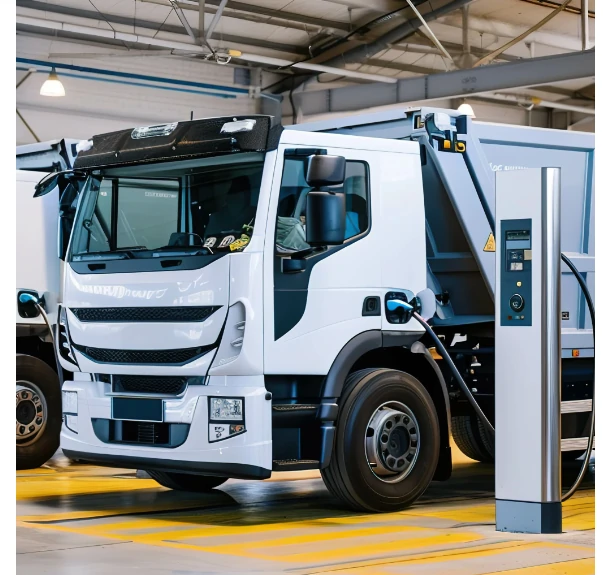What is Medical Waste?
Medical waste refers to hazardous waste produced by healthcare facilities through their interaction with patients. It includes used cotton balls, gauze, bandages, disposable medical instruments, expired medicines, post-surgical discards, and more. Medical waste is unique due to its high levels of infectious microorganisms, viruses, and chemicals, making it highly infectious, biotoxic and corrosive.
Medical waste is classified into five categories:
- Infectious Waste
- Pathological Waste
- Injurious Waste
- Pharmaceutical Waste
- Chemical Waste
It has serious environmental impacts, including contamination of the atmosphere, groundwater, surface water, and soil. Improper handling can release harmful gases like ammoniaand sulfides, and dangerous compounds such as PCBs and dioxins. These compounds are carcinogenic and can cause long-term environmental damage.

Dangers of Improper Medical Waste Management
Vertical Containers
Some improperly managed medical waste is repurposed for illegal activities, such as reprocessing used medical equipment for resale or reusing expired drugs, which can result in health risks and the spread of diseases like AIDS</strong.
Chemical and Radioactive Hazards
Medical waste can contain harmful chemical pollutants and radioactivity, posing significant health risks to both handlers and the public.
Pathogens
Medical waste often harbors disease-causing microorganisms, making it a breeding ground for pests like mosquitoes, flies, and rats, which can spread diseases to humans.

Importance of Medical Waste Management
Given its potential harm to the environment and public health, effective management and harmless treatment of medical waste is critical. Proper waste handling prevents contamination, reduces health risks, and ensures a safer environment for both workers and the public.
Technologies for Medical Waste Treatment
There are several technologies available for treating medical waste, each with its own advantages depending on the type of waste and treatment objectives
- High-Temperature Steam: Uses high pressure and temperature to sterilize waste, killing microorganisms and viruses.
- Chemical Disinfection: Uses chemicals to disinfect waste.
- Microwave Disinfection: Uses microwaves to kill pathogens.
- Medical waste is incinerated at high temperatures in a deep oxidation process that reduces it to ash and gas. Incineration effectively destroys pathogens and harmful substances, reducing volume and weight.
- Applicable for all types of infectious waste**, incineration remains one of the most widely used methods for medical waste treatment.
Pyrolysis heats organic matter in medical waste at high temperatures in an oxygen-deficient environment, breaking chemical bonds and transforming large molecules into gases, liquids, and solid residue.
Compared to incineration, pyrolysis operates at lower temperatures, without open flames, reducing emissions of heavy metals.
- Plasma arc technology uses high-temperature plasma to break down microorganisms, destroy harmful drugs and chemicals, and melt metals and inorganic chemicals, rendering them harmless.

The Evolution of Medical Waste Management in China
China has evolved through several stages in managing medical waste:
Natural Management Phase
During this period, China primarily reused medical supplies due to material scarcity. Medical waste was minimal and often disposed of by burning in hospitals' incinerators. The introduction of single-use medical supplies in the late 1970s led to a significant increase in medical waste.
1949-1986
Stage of Sudden Increase in Medical Waste
The rapid adoption of disposable medical supplies led to a sharp rise in medical waste. The lack of appropriate technology for waste treatment resulted in pollution and health risks, particularly due to unregulated incineration practices.
1987-2002
Legalization Phase
In 2003, China introduced Regulations on the Management of Medical Waste, marking the transition to a legalized approach for managing medical waste. During this phase, comprehensive policies and standards were established, and China signed the Stockholm Convention on Persistent Organic Pollutants (POPs), focusing on the reduction and environmentally sound management of medical waste. Between 2008 and 2017, China collaborated with international organizations to implement sustainable waste management practices.
2003-2019
Quadruple Management Phase
With the advancement of medical technology, China has focused on improving medical waste management through standardization, scientific methods, refinement, and information technology. Key challenges include managing the centralized disposal of waste, improving the classification and collection systems, and addressing interdepartmental supervision.
Post-2020
WHO Guidelines and the Blue Book
The WHO’s Blue Book on Safe Management of Healthcare Waste sets out guidelines for effective medical waste management: It emphasizes the need for a regulatory framework, clear operational roles, and responsibilities. Key objectives of a national medical waste management plan include:
- Legislative and regulatory framework establishment.
- Clarification of waste management operations in the healthcare sector.
- Capacity building and training for medical personnel.
- Development of monitoring and reporting systems.
- Pollution reduction through proper waste treatment.
Challenges in Medical Waste Management
Despite progress, challenges remain
Financial Constraints
Many hospitals still lack the resources to implement adequate waste management systems.
Lack of Awareness
Some hospitals do not prioritize waste classification, and many areas still have poorly implemented waste treatment procedures.
Mixing with Domestic Waste
Medical waste is often improperly mixed with household waste, which can cause contamination.
Prevention of Pollution
There have been reports of medical waste being recycled or sold for profit, including the reuse of infusion bottles, expired drugs, and plastic medical supplies.
Solutions to Improve Medical Waste Management
Medical waste containers must meet the following criteria to ensure their durability and safety

Stronger Regulations and Oversight
Increased penalties for non-compliance and better enforcement of medical waste management laws.

Standardized Collection and Treatment
Establishing clear protocols for medical waste classification, collection, and disposal, ensuring waste is handled safely from generation to final disposal.

Building Professional Treatment Facilities
Developing centralized and standardized medical waste treatment centers with modern technology to handle medical waste more efficiently.

Raising Safety Awareness
Increasing awareness among medical staff and the public about the importance of safe waste handling practices.

Load-bearing capacity
Using IT solutions to track and manage medical waste generation, transportation, and disposal to ensure transparency and regulatory compliance.
Conclusion
Proper management of medical waste is essential for protecting the environment and public health. While China has made significant strides in improving waste management, ongoing efforts are needed to address regulatory gaps, improve treatment facilities, and raise awareness. By strengthening regulations, standardizing procedures, and building capacity, China can move towards a more sustainable and safe medical waste management system.
FAQ
Biosafe offers a comprehensive range of high-quality products, backed by 16 years of industry expertise. We excel in understanding global regulations, providing tailored solutions, and delivering reliable after-sales support through our network of local engineers.
All our products undergo rigorous quality checks and are CE-certified, ensuring they meet and exceed global regulatory standards. Our in-depth knowledge of international laws allows us to guide clients through compliance, no matter where they operate.
Yes, Biosafe maintains a robust inventory and offers fast delivery, including door-to-door services. We understand the urgency of medical waste management and are equipped to provide prompt support when you need it most.
Our commitment to customer satisfaction doesn’t end with the sale. We provide ongoing support through our local engineers, ensuring that any issues are resolved quickly. We also offer guidance to help clients get the most out of our products and solutions.
Biosafe has extensive experience in assisting clients with medical product tenders. We provide expert guidance in product selection, compliance documentation, and tailored solutions to meet the specific requirements of each tender, helping our clients achieve success in competitive bidding processes.
Send a message
Find us
17th Floor, Caochangmen street, Nanjing City, Jiangsu Province, China
Email: [email protected]
Phone: +86 13276687134 Phone: +44 07516023572
